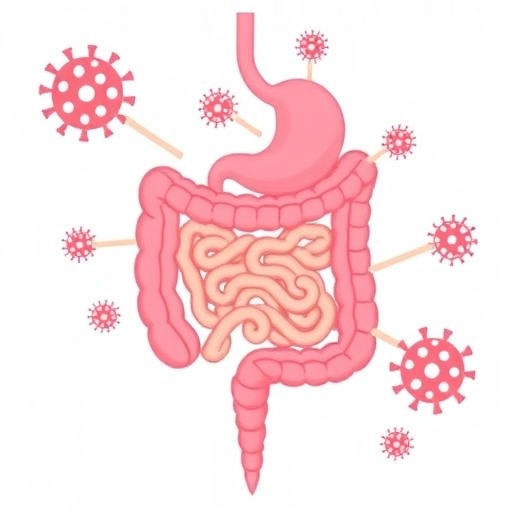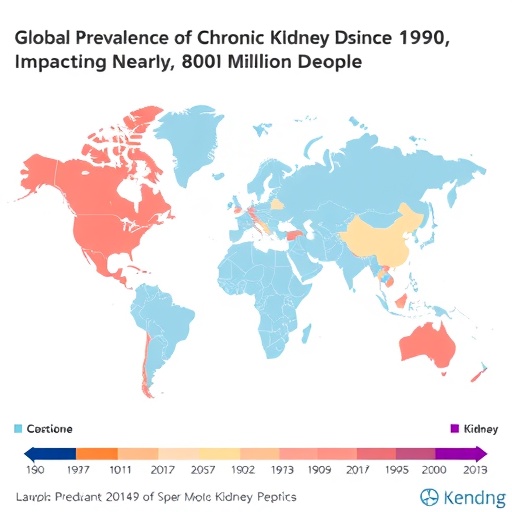
In a groundbreaking exploration of gut microbial ecology, recent research reveals how non-antibiotic drugs can disrupt the delicate balance of colonization resistance against harmful pathogens. This study sheds light on the complex interplay between a pathogen and its closely related microbial competitors within the gut environment, exposing how drug-induced perturbations tilt this balance in favor of pathogen expansion. By employing innovative synthetic communities and stool-derived microbial consortia, the work charts unexplored territory in understanding drug-microbiome-pathogen interactions, with profound implications for disease prevention and treatment.
Central to this investigation is the concept of a niche competitor—a commensal microbial species that shares metabolic traits similar to a pathogen, thereby limiting the pathogen’s ability to thrive by outcompeting it for crucial resources. The researchers constructed two distinct model gut communities: Com20, a synthetic consortium of 20 bacterial strains, and Com21, an augmented version of Com20 with the addition of Escherichia coli ED1α, chosen for its metabolic similarity to the pathogen Salmonella enterica serovar Typhimurium (S. Tm). This deliberate amplification of metabolic diversity in Com21 provided an ideal platform to explore how niche competition influences pathogen dynamics under drug treatment.
The inclusion of E. coli ED1α in Com21 materially reduced S. Tm levels when no drug pressure was applied, illustrating the natural suppressive effect of niche competitors. However, when exposed to a spectrum of 240 drug-concentration combinations, a significant correlation emerged between the drug effects on S. Tm growth in both Com20 and Com21 communities. Intriguingly, treatments that targeted E. coli removal facilitated the expansion of S. Tm in Com21, underscoring that dampening the niche competitor grants the pathogen a competitive advantage. Conversely, drugs promoting E. coli proliferation curtailed S. Tm expansion, reinforcing the concept that the abundance of niche competitors is a pivotal factor in controlling pathogen invasion.
.adsslot_y4DifOV1wM{width:728px !important;height:90px !important;}
@media(max-width:1199px){ .adsslot_y4DifOV1wM{width:468px !important;height:60px !important;}
}
@media(max-width:767px){ .adsslot_y4DifOV1wM{width:320px !important;height:50px !important;}
}
ADVERTISEMENT
This dynamic was further elucidated by analyzing the relative abundance of E. coli ED1α across treated and untreated Com21 samples. Treatments that suppressed E. coli were linked with an increase in pathogen luminescence, a proxy for growth, whereas drugs that spared or enhanced E. coli presence corresponded with diminished S. Tm levels. These observations suggest that drug sensitivity profiles of specific community members, especially niche competitors, are integral in shaping community structure and resistance to pathogen colonization.
To validate whether these findings transcend simplified synthetic systems, the study examined complex stool-derived communities from eight healthy adult donors. Despite intrinsic donor-to-donor variability in microbial compositions and drug sensitivities, the patterns observed in Com20 and Com21 were largely recapitulated. Notably, S. Tm growth within these human-derived communities was positively correlated with its growth in synthetic communities, with higher correlations evident for Com21 over Com20. This indicates the critical role of Escherichia species, present in stool-derived microbiomes, reinforcing the ecological relevance of these metabolic competitors in natural gut environments.
Delving into the mechanistic underpinnings of this competitive interaction, the research team investigated pathways potentially driving nutritional rivalry between S. Tm and E. coli, particularly under drug treatment conditions favoring E. coli growth. They homed in on fumarate respiration, an anaerobic metabolic pathway vital for enteric pathogen survival and colonization. Using a mutant strain of S. Tm lacking the frdD gene—which encodes a subunit of fumarate reductase—they demonstrated a competitive disadvantage when co-cultured with E. coli ED1α. This result underscores fumarate respiration as a key driver of pathogen fitness in the face of microbial competition.
Further experiments with the drugs tiratricol and streptozotocin, which selectively influenced E. coli populations, confirmed that S. Tm mutants deficient in fumarate respiration fared worse under treatments that favored E. coli. The impaired ability to respire fumarate reduced the pathogen’s success in invading microbial communities where E. coli thrived. Thus, the study reveals that metabolic interactions mediated by drug-induced shifts in community composition can decisively impact pathogen expansion.
Collectively, these findings illuminate a novel dimension of how non-antibiotic therapeutics can inadvertently compromise colonization resistance. By altering the abundance and activity of niche competitors, such drugs remodel the ecological battlefield within the gut microbiota, potentially creating niches for pathogens to exploit. This paradigm shift advances our understanding of drug-microbe-pathogen triads and raises critical considerations for therapeutic regimens beyond traditional antibiotic use.
The implications for clinical practice and microbial ecology are immense. Recognizing that drugs not primarily designed as antimicrobials can nonetheless disrupt colonization resistance invites a reevaluation of the collateral effects of pharmacological interventions. These insights emphasize the necessity of integrating microbiome-aware strategies in drug development and administration to preserve beneficial microbial populations that safeguard against infectious agents.
Moreover, this work presents a compelling case for leveraging metabolic competition as a means to control pathogenic invasion. Enhancing the resilience of niche competitors like E. coli could form the basis for innovative probiotic or microbial ecosystem engineering approaches aimed at reinforcing colonization resistance, especially amidst increasing antibiotic resistance and growing appreciation of microbiome health.
By bridging simplified synthetic community models and complex, donor-derived microbiomes, this research offers a robust framework for dissecting host-pathogen-microbiota interactions. The mechanistic identification of fumarate respiration as critical in pathogen competition opens exciting avenues for targeted interventions that modulate specific metabolic pathways to temper pathogen success without broad-spectrum antimicrobial use.
In an era where the microbiome’s role in health and disease is being redefined, these findings contribute a pivotal piece to the puzzle. They urge the scientific and medical communities to consider how everyday drugs might be silently shaping microbial ecologies in ways that influence infection susceptibility. With antibiotic stewardship at the forefront of global health priorities, embracing a nuanced understanding of these ecological interactions could revolutionize infectious disease prevention and treatment.
Ultimately, this research invites a paradigm shift: treating the microbiome as an ecosystem where chemical perturbations reverberate far beyond their intended targets, influencing the very balance between health and disease. As we deepen our grasp of these complex dynamics, the potential to develop smarter, ecology-conscious therapeutics looms large, promising a future in which collateral damage to beneficial microbes is minimized and pathogen control is enhanced.
Subject of Research: Microbial community resistance to pathogen colonization and the impact of drug-induced ecological perturbations.
Article Title: Non-antibiotics disrupt colonization resistance against enteropathogens.
Article References:
Grießhammer, A., de la Cuesta-Zuluaga, J., Müller, P. et al. Non-antibiotics disrupt colonization resistance against enteropathogens. Nature (2025). https://doi.org/10.1038/s41586-025-09217-2
Image Credits: AI Generated
Tags: colonization resistance against pathogensdisease prevention through microbiomedrug-induced perturbations in gutEscherichia coli and Salmonella dynamicsgut microbial ecology researchimplications of drug treatments on gut healthmetabolic traits of commensal bacteriamicrobial consortia and pathogen competitionniche competitor in microbiomenon-antibiotic drugs and gut microbiomepathogen-microbiome interactionssynthetic gut communities study





